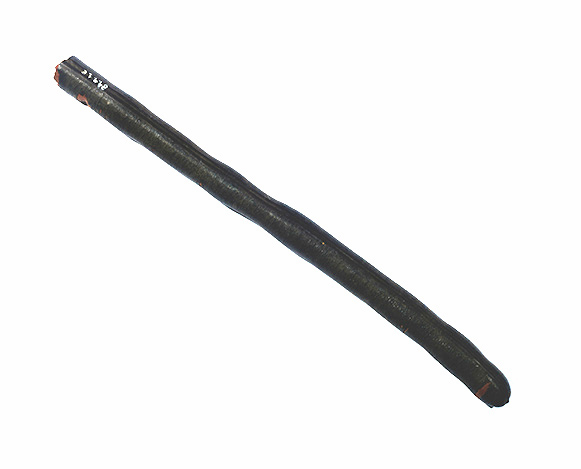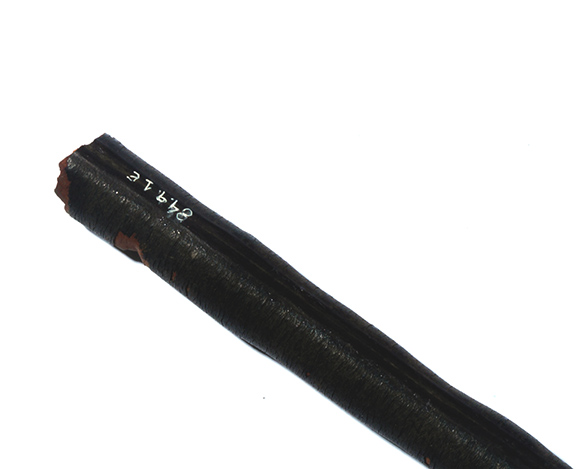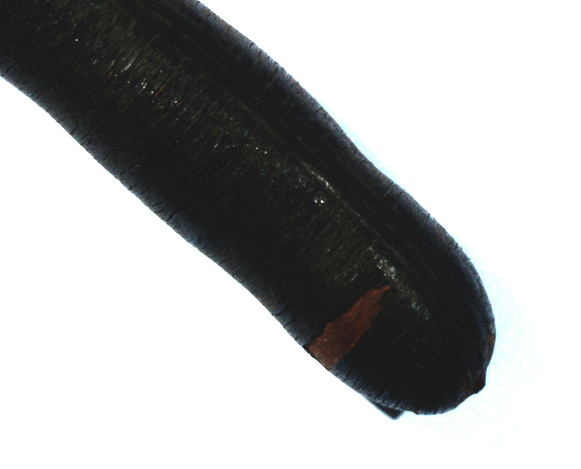



The generic term rattle refers to a group of idiophones with the function of sound adornment and/or linear rhythmic support, which produce a timbral intonation not aligned with the tonality system. They can be presented in two ways: in the form of a hollow body filled with balls or seeds, which produce sounds when they hit the internal walls when shaking or percussion the instrument, or structured with elements fixed on the external side of their body, such as seeds, beads, shells, stones or pieces of glass, for example, which with the same shaking or percussion movement emit sounds.
Materials such as wood, plastic, metal, fruits (gourd or “coité”, coconut) can be used to make the rattles. This item, which is part of the Villa-Lobos Museum collection, is a pod whose seeds are released inside, after ripening and subsequent drying, which can function as a natural rattle.
Rattles are percussion instruments found in many musical cultures around the world. Their names and forms vary depending on factors such as the language and traditions of each place. In Brazil, a country of continental dimensions, we can highlight the issue of cultural regionalism as a determinant for the nomenclature of these instruments, depending on the folk tradition to which they belong. D’Anunciação (2006) cites some examples, such as the “metal maracás, in different sizes, in the folkloric toys of Maranhão; the massaracás, manacás, massaracaias (of metal), in the Bandas de Congo in Espírito Santo; the ganzá, seed stick (of metal), in the Bambelô of Rio Grande do Norte; the ganzá or canzá of tin in the Taieiras of Sergipe; the caracaxá and the ‘mineiros’ (metal) in Caboclinhas do Recife”, among others. All have the same tone color, which can be modified if the instrument is made of non-metallic material.
BERKLEY ET AL., 2009
MIMO, 2011.






